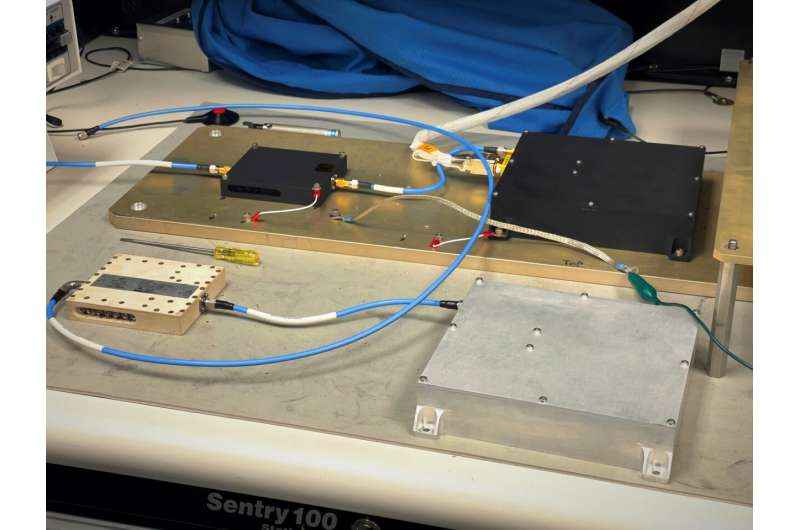Onboard: the Lunar GNSS Receiver Experiment (LuGRE) payload will investigate whether signals from two GNSS constellations can reach the lander and provide precise navigation on the moon for future missions.
"LuGRE is a cutting-edge experiment, enabling us to expand Earth-based navigation systems to the moon," said Joel Parker, Principal Investigator for LuGRE.
The LuGRE payload is managed by NASA's Space Communications and Navigation (SCaN) program office, which oversees the agency's navigation portfolio and contributes to international navigation policies.
During a roughly 12-day mission in the moon's Mare Crisium basin, LuGRE is expected to obtain the first-ever GNSS fix on the lunar surface and receive signals from both GPS and Galileo, the European Union's GNSS constellation.
This payload is a collaborative effort between NASA and the Italian Space Agency to expand the bounds of Earth-based navigation systems. Over the past few months, navigation engineers at NASA's Goddard Space Flight Center in Greenbelt, Maryland, have been testing the payload's GNSS receiver and low noise amplifier, pictured below. The receiver, the heart of the LuGRE payload, was developed and built by the Italian company Qascom.
These components will be critical to LuGRE obtaining signals from the GPS and Galileo satellites. To prepare for operating at the moon, NASA engineers used a GNSS simulator to test and configure the payload to accurately receive and process the signals. As of February 2023, the Goddard team delivered the flight hardware to Firefly Aerospace in Cedar Park, Texas, where it will be integrated into the Blue Ghost lander.
With the Artemis missions, NASA and its partners are establishing humanity's presence on the moon. Astronauts and rovers traversing the rocky lunar surface will need precise location and tracking data for their exploration endeavors. The data gathered from the LuGRE payload will be used to further develop GNSS-based navigation systems for future missions to the moon.
Provided by NASA's Goddard Space Flight Center



